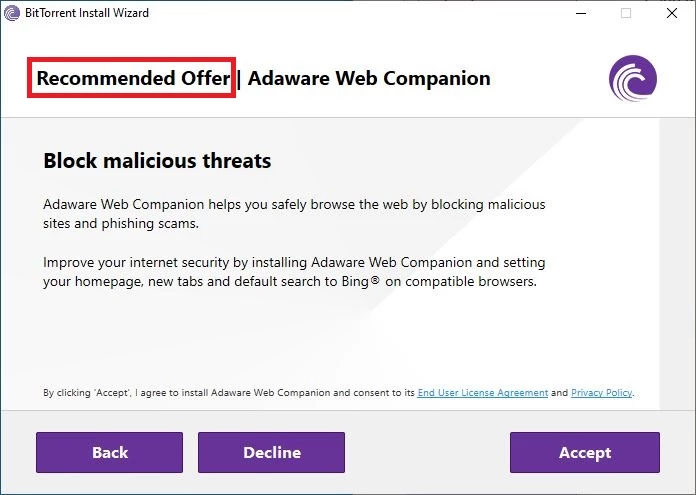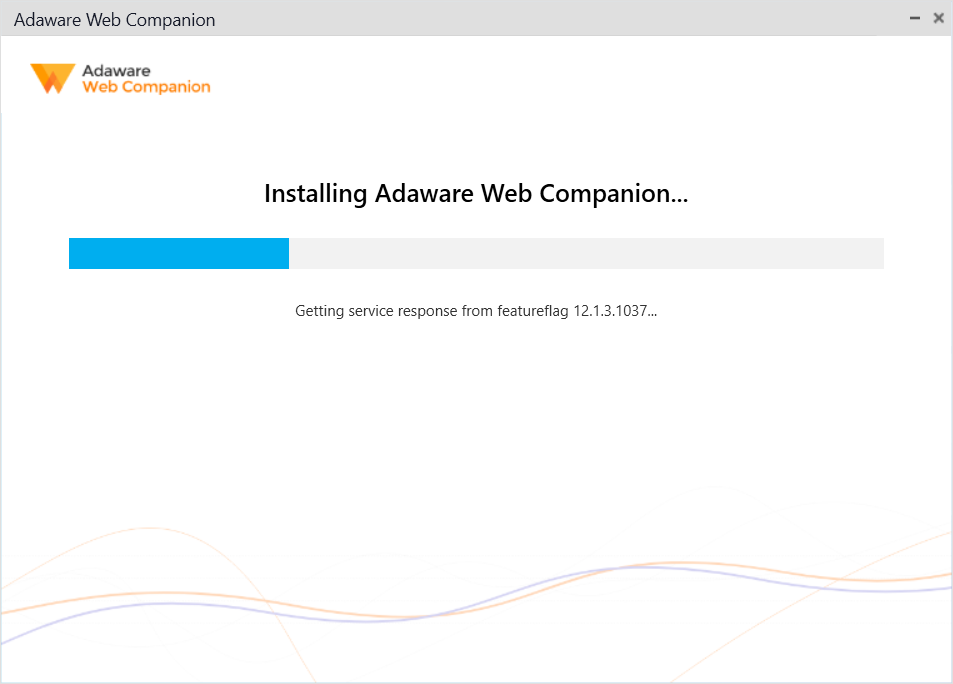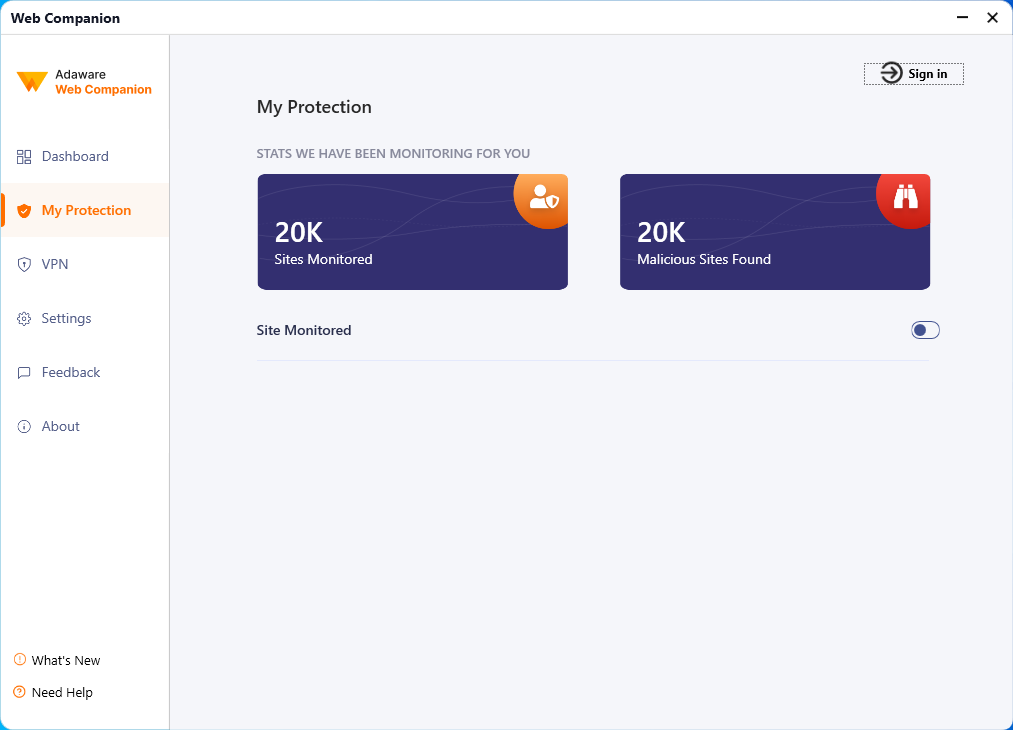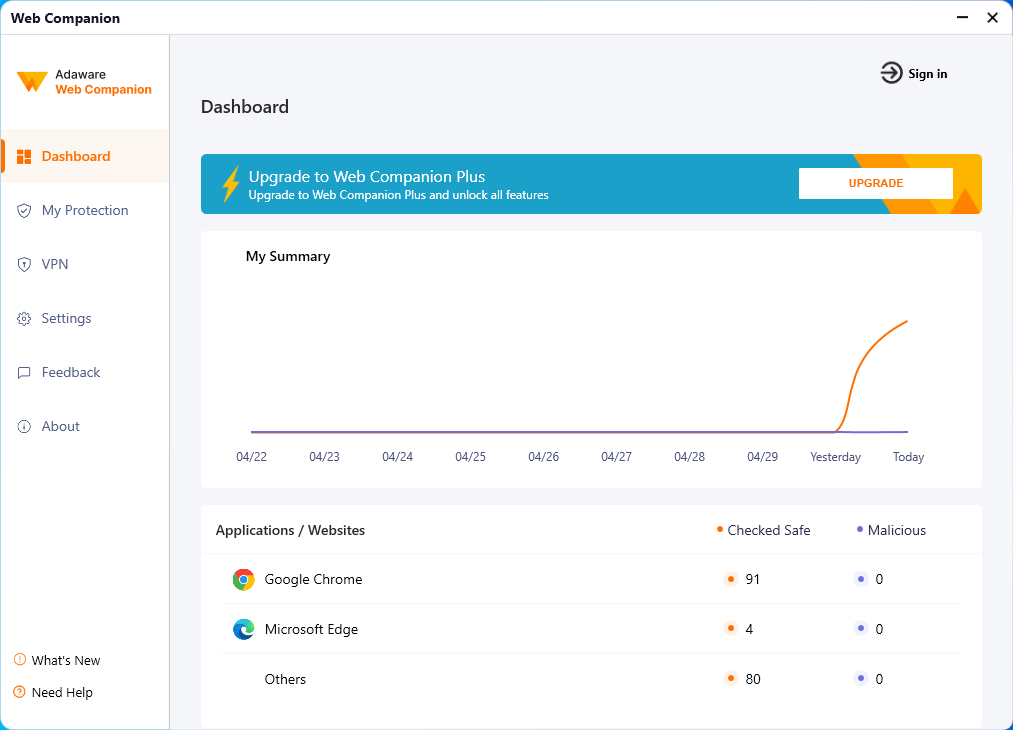Web Companion is an unwanted program works as a web protection tool. It appears unexpectedly, after the installation of a different program, and tries to make the user pay for a “premium” version. Questionable effectiveness and bloated results are what makes it not recommended to use.
Pseudo-effective applications are not severely dangerous, but they can still make your user experience worse. In their operations, such apps can block some of the genuine files and sites. Moreover, they sometimes collect extensive information about user activities, which is a privacy risk.
What is a Web Companion?
Web Companion is a program advertised as a network security tool, a makeshift firewall, which scans network traffic to protect the user from questionable websites. Its efficiency, however, starts looking less convincing when you try to use the program in its intended way. An inflated number of reviewed connections, absent information about the scanning – that is only the tip of the iceberg. Below, you will find a detailed runtime analysis of this app.

First suspicions appear when you review the spreading ways of this program. It has an official website, but I doubt a lot of people have gotten Web Companion from here. A much more common way, by user reports, is installing in a bundle with various freeware. Particular programs of that kind are BitTorrent Classic, BitTorrent Web, and FormatFactory. Some of them offer to choose whether you want to install these, but some do it right away, ignoring the user’s choice.

The cybersecurity community considers software bundling an unwanted spreading method, and I totally agree with this conclusion. This makes Web Companion look as an unwanted program. And this is also accompanied by the user experience – let’s get into it step by step.
Web Companion Runtime Analysis
To have a proper user experience, I’ve decided to get this application from the bundle. It did not take long to get one, so out of the blue, the installation window appeared.

From the first glance, Web Companion is an OK program. A few paid, though not essential functions, and the rest of the functionality, although sparse, is available right away. However, its main screen raises the first concern – stat counters look artificially bloated, without any ability to see the list of web requests it has detected. Magically, after rebooting the machine, the number of URLs related to Chrome browser almost quadrupled – from 24 to 91.
It should have been OK to see the “Other” category rise without user actions – it is likely about Windows requests to Microsoft servers. The thing is – I’ve disabled the entirety of telemetrics on this virtual machine to speed it up, so this most probably is yet another “inaccurate” counter. The rest of the interface looks pretty unremarkable – some stats, minimal amount of settings, along with the offer to use their paid VPN service.
The page under the “My Protection” tab, however, made me confused. What are these “20k Sites Monitored” about? If this is just the number of sites in the database – why does nothing tell the user about it? Or is it a counter of my machine’s total number of detections? The interface here is probably too simple – such a large number of malicious sites with no annotation may confuse or even scare the users.

What is the conclusion? Well, if you installed this program by yourself, and have a better experience from what I’ve got in my tests – then it is totally OK. However if you do not remember installing it, and there are some other questionable things running in the system – then it should go.
How to Uninstall Web Companion?
To remove Web Companion, I recommend using GridinSoft Anti-Malware. Sure, its manual is not really complicated: the program is present in the list of installed apps, so you can uninstall it in just a few clicks. But as I said above, the app usually comes in a software bundle, along with several other unwanted apps. Finding and removing them all manually is a complicated process – that’s why automated removal is the best option.
GridinSoft will also provide you with a great network security feature. We update our detection databases every hour, adding all the new dangerous sites as soon as they appear. Heuristic and AI detection systems assist with spotting even the least noticeable signs of danger.







